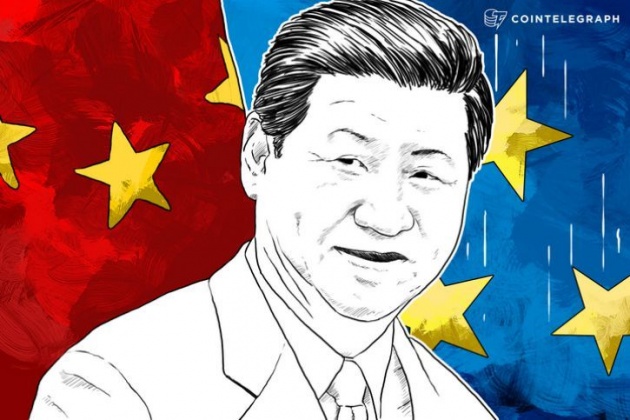The Chinese government along with its Central Bank have taken extraordinary measures to halt the free-fall of its stock markets. But while these measures appear to have stopped the bleeding for now, is government intervention the right solution for the world’s second largest economy?
Or will it ultimately hurt the overall confidence of investors and the public towards Chinese markets and force money to flee to other asset classes such as gold or virtual currency?
The ‘Greenspan Put’
Former Fed Chairman Alan Greenspan was perceived to be so market friendly and communicated such to the markets that most investors in the market believed the Federal Reserve would stand by and provide ample liquidity and use whatever easing tools it needed to support the markets. This came to be known as the “Greenspan Put.”
Bernanke and Yellen have followed suit in these policies even more so than their predecessor. President of China, Xi Jinping, has taken this to a whole new level by taking the free out of free markets. What China has done over the last week demonstrates the government and the PBOC will use any means necessary to prop up the Chinese markets.
Can Confidence Be Restored?
Joyce Poon of EvergreenGaveKal, dubbed the term “Xi Jinping Put” showing that Beijing and the PBOC will protect the capital markets. Last week after cutting interest rates for a fourth time and lowering the reserve ratio requirements for a third time, counterintuitively the market continued to sink even further.
Chinese officials don’t see this as just a falling stock market, but a loss in confidence and political credibility, that needed to halt. More moves were made to shore up confidence and stop the freefall.

- The State Council ordered an indefinite suspension of new share issues, which should halt further dilution and free investor funds that would otherwise have been locked up ahead of initial public offerings;
- The China Securities Regulatory Commission said that the capital of the China Securities Finance Company, a state body which extends margin financing to brokers, would be increased fourfold to RMB100bn, and pledged that the People’s Bank of China would inject liquidity into the lender in order to support the market;
- Central Huijin, a powerful state investment fund, said it was buying index-tracking ETFs;
- A score of China’s leading brokerage companies said they will set up a RMB120bn fund to buy stocks, also pledging they will not sell stocks on their own account while the Shanghai Composite index remains below the 4,500 level. At Monday’s close it was at 3,776;
- Nearly 100 fund management companies promised to buy stocks to support the market;
- In addition, last week the authorities announced a crack-down on short sales and said the national pension fund would be permitted to buy equities.
The reason why is because the people that got hurt the most in this were retail investors. Low to middle class investors who got caught in the hype while the government talked up buying stocks right up until they plummeted.
“A middle class that believed deeply that the motherland would become strong has been eviscerated,” read an essay circulating on Chinese websites this week that was credited to an investor who had lost most of his savings. “This was a stock wipeout that thoroughly damaged middle-class assets from a decade of striving. For us, the China Dream really is just a dream.”
“’Credit Suisse estimated in a research note this week that 80 percent of urban Chinese households held stakes in the stock market, either directly or through equity funds that invest in it.”
Thus far, these moves have worked as the Shanghai has produced its largest 2 day gains in years and for now a bottom appears to be in place.
Going Down is Not an Option
Short selling has been banned in China, a move that reminds many of the extraordinary measures taken in September 2008 to stop the rout. It didn’t work then and it will not work now. Remember, after that rule was put in, the market sank much lower all the way to the March 2009 bottom.
The reason for this is simple, short sellers actually provide a service to the market in many ways. Short sellers are buyers in crashes, as they lock in profits at areas they deem to be near bottom, they buy the stock and provide a type of floor for the market. This is an important function of efficient markets.
By banning short selling, markets suffer from a massive of confidence by the participants in them as it smacks of desperation, and in effect, this causes more selling and increases volatility. In other words, it is blatant centrally planned market manipulation as it’s forcing companies to not sell stocks for 6 months or until the Shanghai reaches 4500 again.
As stated in a previous article, the question is less about whether the Chinese market has bottomed out or not, but whether the people have lost complete confidence in Beijing and the PBOC and are looking to invest in other asset classes.
The answer is definitely yes. This flies right in the face of a commitment by Xi Jinping to liberalize the financial sector and open up the markets. It will be interesting how this gets spun in the coming months and if this is the beginning of a larger correction accompanied by slower growth in the Chinese economy over all.
Corrections are a normal part of market uptrends, but its generally the velocity of the correction that should be worrying. In this case, this crash happened so fast that the damage that has been caused will not be fully known for months to come..



